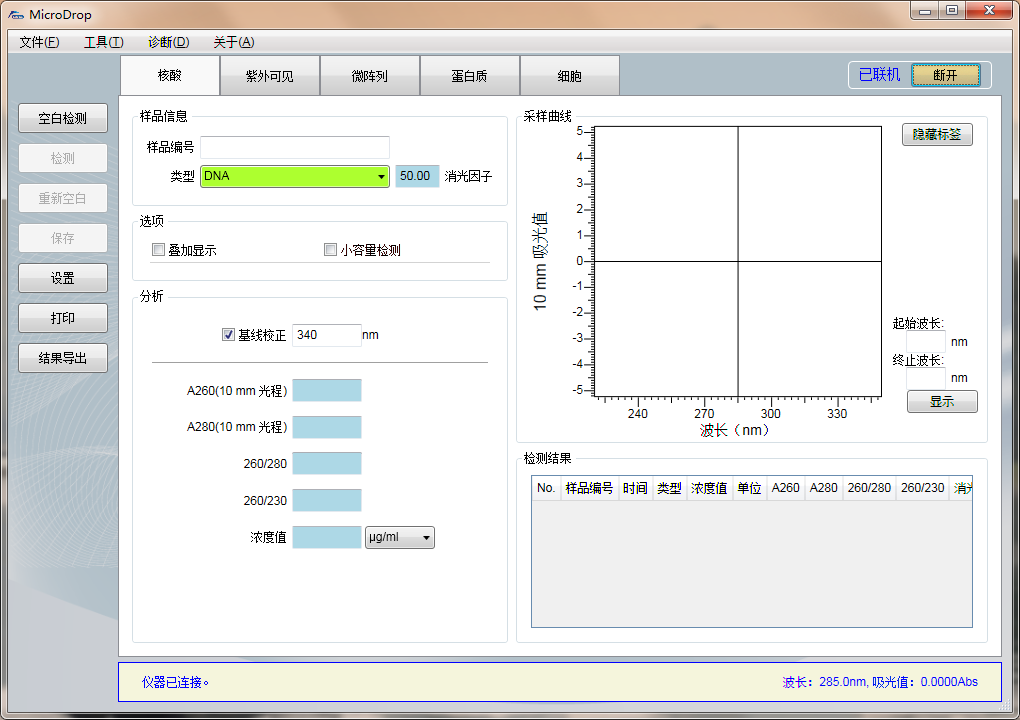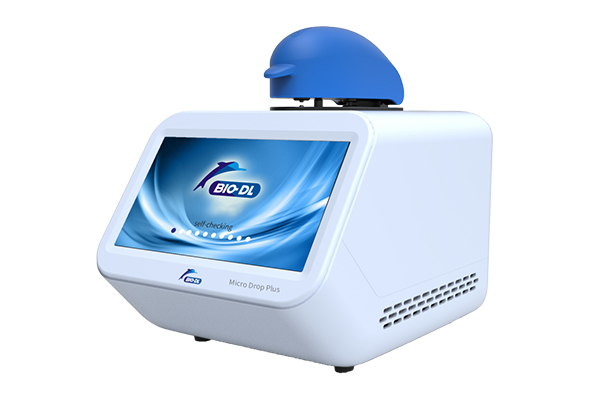
Ultra-microvolume spectrophotometers are indispensable tools in modern analytical workflows, widely adopted across molecular biology, pharmaceutical research, food science, and beyond. Among critical operational steps, performing accurate blank measurements is fundamental to ensuring instrument precision and reliable results. This guide explores best practices for blank measurements and their significance.
What is a Blank Measurement & Why is it Crucial?
A blank measurement establishes the baseline for your sample's solvent environment. The instrument records the light intensity spectrum transmitted through the blank solution. During subsequent sample measurements, the sample's absorbance (A) is calculated using the formula:
This corrects for solvent absorbance, cuvette/material effects, and instrumental baseline drift, isolating the absorbance attributable solely to your analyte.

Selecting the Correct Blank Solution
Core Principle: Use the solvent dissolving your target molecule.
Critical Match: The blank solvent must possess identical pH and ionic strength to your sample solution. Common blanks include:
Nuclease-free water (for nucleic acids in aqueous buffer)
Specific buffer solutions (e.g., PBS, Tris-EDTA matching sample buffer)
The elution buffer used in purification kits
Accuracy Impact: An incorrect blank (e.g., water vs. high-salt buffer) introduces significant errors by failing to account for solvent absorbance.
Performing the Blank Measurement: Procedure & Frequency
1. Load: Deposit 0.5-2 μL of the prepared blank solution onto the measurement pedestal using a calibrated pipette. Ensure no bubbles.
2. Measure: Execute the blank measurement protocol on your instrument. The system stores the baseline spectrum.
3. Sample Measurement: Load sample(s) dissolved in the identical solvent. The instrument automatically references the stored blank to calculate sample absorbance.

How Often Should You Re-blank?
General Workflow (Typical Concentrations): Modern instruments with highly stable xenon flash lamps (like Bio-DL's Microdrop series) maintain exceptional baseline stability. A single blank measurement is typically valid for at least 60 minutes, as baseline drift remains minimal (<0.002-0.003A, 10mm pathlength equivalent). This drift is negligible for most routine assays and doesn't significantly impact repeatability if the sample well is thoroughly cleaned between measurements.
Critical Applications (Low Concentration/High Precision): When measuring very low-concentration analytes (e.g., dilute DNA/RNA, proteins) or under stringent QC protocols, baseline drift over time can introduce measurable uncertainty. In these cases:
Re-blank more frequently (e.g., every 15-30 minutes).
Consider performing a dedicated blank immediately before each critical low-concentration sample to minimize time-based drift error. While this impacts throughput slightly, it maximizes accuracy.
The Consequences of Poor Blank Practices
Inaccurate or unstable blanks are a primary source of error in microvolume spectrophotometry, leading to:
Incorrect sample concentration calculations.
Compromised purity ratios (A260/A280, A260/A230).
Reduced data reproducibility.
Baseline drift obscuring true sample signals.
Optimize Your Blank Measurements with Bio-DL Microdrop Series
Achieving reliable results starts with instrument stability and intuitive operation. The Bio-DL Microdrop Series Ultra-Microvolume Spectrophotometers are engineered to simplify blank workflows and maximize data confidence:
1. Unparalleled Xenon Lamp Stability: Our advanced lamp system delivers the exceptional baseline stability discussed, minimizing the need for frequent re-blanking in routine applications.
2. Proactive System Diagnostics: The Microdrop performs automatic light source intensity checks during startup. An initialization pass confirms optimal lamp performance. Integrated real-time spectral diagnostics allow you to monitor source stability anytime during operation.
3. Streamlined Workflow: Intuitive software guides you through blank and sample measurement setup, ensuring correct procedure execution.
4. Precision Fluid Handling: Optimized sample pedestal design ensures reliable measurement of sub-microliter volumes (0.5 μL) for both blanks and samples, minimizing precious reagent consumption.
5. Broad Application Coverage: Accurately quantify and assess purity of DNA, RNA, proteins (including BSA, IgG), and more across diverse buffers.

Maximize your assay accuracy and efficiency. Experience the stability and reliability of Bio-DL Microdrop Spectrophotometers.
Visit our website to explore the full Microdrop Series specifications and discover how it enhances your microvolume analysis!